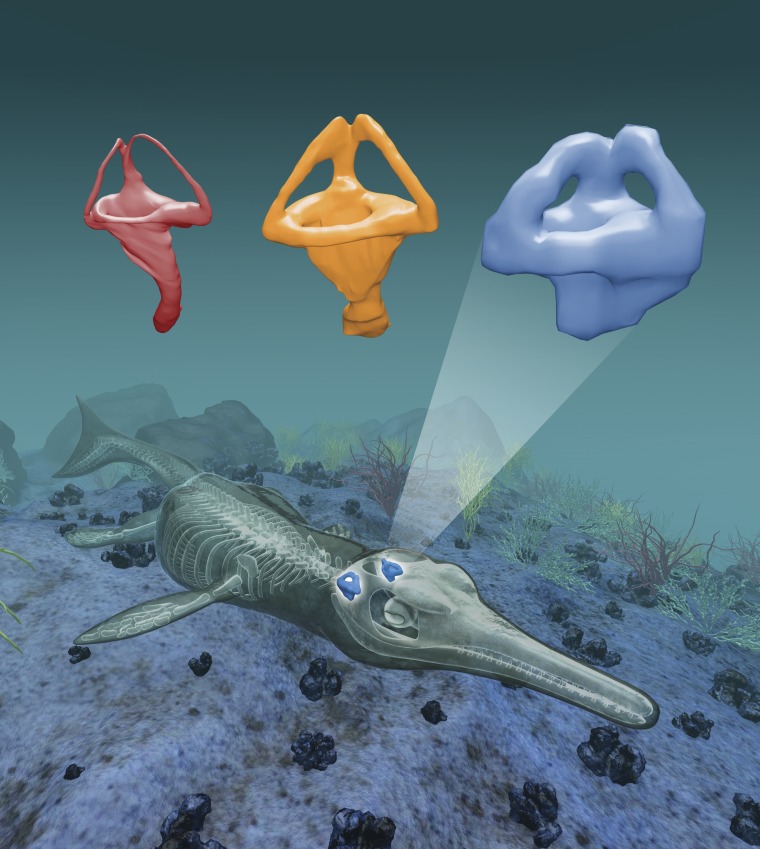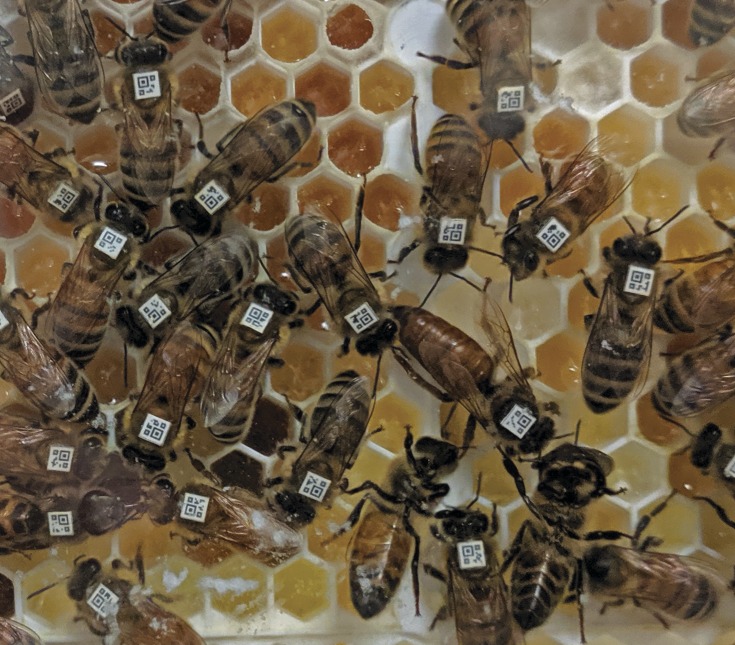How reptiles adapted to marine life
Artist’s conception of a metriorhynchid, an extinct crocodile relative. Shapes represent evolution of the inner ear (bony labyrinth) from terrestrial (Left) through semiaquatic (Middle) to pelagic (Right). Image credit: Bryan Christie Design.
During major evolutionary transitions, the development of new body plans allows animals to adapt to novel habitats and lifestyles. One of the most well-known examples are cetaceans, which evolved from terrestrial mammals into open-ocean swimmers, but relatively little is known about the earlier, land-to-sea transition of reptiles during the Mesozoic Era. Julia Schwab et al. (pp. 10422–10428) explored evolutionary trends in a key vertebrate sensory system, the inner ear sensory system, which is involved in balance and equilibrium. Using computed tomography, the authors examined the anatomy of the inner ear vestibular system of 18 extinct reptile species and 14 modern relatives. The authors focused on the bony labyrinth, a cavity in the inner ear that includes structures called the vestibule and semicircular canals. Compared with terrestrial species, open-ocean thalattosuchians, which are extinct crocodile relatives, had shorter, more compact labyrinths, wider semicircular canals, and an enlarged vestibule, similar to cetaceans. However, unlike adaptations of the inner ear vestibular structures of cetaceans, those of reptiles developed after a prolonged semiaquatic stage and appeared after the first skeletal modifications for swimming. Taken together, the results demonstrate that distinct evolutionary routes resulted in similar vestibular system changes for different types of terrestrial animals that transitioned to open-ocean swimming, according to the authors. — J.W.
Social behavior manipulation by honey bee virus
Individually coded honey bee workers and queen interact inside a monitored colony.
The use of honey bees for pollination has intensified in recent decades, leading to unnaturally high colony densities and coinciding with increased risk of exposure to pathogens. Amy Geffre, Tim Gernat, et al. (pp. 10406–10413) examined whether infection with Israeli acute paralysis virus (IAPV) alters honey bee social behavior in ways that influence virus spread. Automated monitoring of colonies revealed that IAPV-infected bees engaged in fewer social contacts with colony mates than did controls, potentially preventing viral transmission within the colony. Laboratory studies suggested that the change is part of a generalized response to viral infection. However, IAPV-infected bees elicited less aggression in bees from other colonies and were more likely to be accepted into foreign colonies, compared with controls, thereby facilitating viral transmission between colonies. The reduction in aggression was accompanied by changes in the levels of cuticular hydrocarbons (CHCs)—chemicals used by bees to distinguish colony members from intruders. Both the reduced aggression from foreign bees and the CHC changes were specific to IAPV infection. The results suggest that IAPV manipulates host social behavior to enhance transmission. The high colony densities found in modern apiculture might facilitate the evolution of similar strategies in honey bee pathogens, according to the authors. — B.D.




